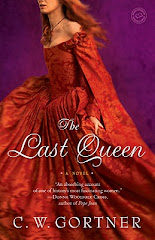 y and sets out to forge a new life for herself. In midst of adventure and tragedy she discovers honor is not always where one expects it and that true love can come in the form of another woman. Nan has graciously offered us this guest post celebrating her new book's release.
y and sets out to forge a new life for herself. In midst of adventure and tragedy she discovers honor is not always where one expects it and that true love can come in the form of another woman. Nan has graciously offered us this guest post celebrating her new book's release.Please join me in welcoming Nan Hawthorne!
Women Fighters in the Crusades
By Nan Hawthorne
One of the challenges an author has in writing historically accurate novels about the Middle Ages is whether sources from that time can be trusted. A combination of alternate sources,
 archeological evidence, and just plain common sense over and over has put what clerical chroniclers set down as fact in doubt. Perhaps one of the most notable examples of this fact is writing about the Crusades. Another is any writing at all about women. If you take what the Church writers record as the sole evidence, there were no women at the Crusades. They were certainly discouraged from going, though in fact as the mass of pilgrims were not military, coupled with the fact that both soldiers and other pilgrims brought their families, it is clear that in fact plenty of women were present. There are, of course, famous examples of noble women who went to the Crusades, most notably Eleanor of Aquitaine when she traveled with her first husband, the King of France. But for all her play-acting at being an Amazon w
archeological evidence, and just plain common sense over and over has put what clerical chroniclers set down as fact in doubt. Perhaps one of the most notable examples of this fact is writing about the Crusades. Another is any writing at all about women. If you take what the Church writers record as the sole evidence, there were no women at the Crusades. They were certainly discouraged from going, though in fact as the mass of pilgrims were not military, coupled with the fact that both soldiers and other pilgrims brought their families, it is clear that in fact plenty of women were present. There are, of course, famous examples of noble women who went to the Crusades, most notably Eleanor of Aquitaine when she traveled with her first husband, the King of France. But for all her play-acting at being an Amazon w arrior, she did not in fact fight.
arrior, she did not in fact fight.What constitutes fighting? We have a tendency to interpret the fighter as the knight, or at least, a man at arms. There were documented female knights, but they were not necessarily fighters. More likely a woman knight would be the mistress of lands under fealty to an overlord, obligated to provide armed men for his use. But the mounted knight and even the man at arms is not the whole picture of a Crusader. Women could and did use bows and could participate in many aspects of siege warfare, part and parcel of the Crusades. It is a sort of classism and sexism that makes us see the woman’s involvement as lesser and therefore not credit it as fighting.
Recent consideration of Moslem sources and points of view offers alternate evidence of women in battle. The role of women in a siege is a perfect example. At Acre Moslem chroniclers describe in detail the women’s remains found afterward on the battlefield, women who wore some armor and carried weapons. The Church chroniclers do not admit to this, but the Moslem writers dispassionately acknowledge that Christian women fought alongside their husbands and brothers. The fact is that the question is not whether women fought but whether their participation in fighting was recorded. Christians were just one side of the conflict. Islam has numerous female warriors in its tradition. Though not specifically involved in the Crusades Nusaybah Bint k’ab Al Maziniyyah was a female fighter who fought at the Battle of Uhud with the army of Muhammad. Sharifa Fatima was a Zaydi chief in 15th century Yemen, and conquered San'a.
Looking at other conflicts in history one finds instances of women fighting along with men. Even in the Middle Ages there are numerous examples of women who fought, not only Joan of Arc, but also Aethelflaed, Lady of the Mercians and other warrior queens. Of the common soldier there is ample evidence of women fighting in, for example, the American Civil War. In that conflict women not only fought, but they joined the army and passed as men in order to do so. There are dozens of such accounts, revealing that it is not impossible for a woman to get away with passing as a man. They not only could, they did. If this happened in earlier wars, they simply would not have been counted as women fighters but included among the men.
When I was first working on Beloved Pilgrim someone asserted to me that swords were huge and heavy and no woman’s wrist was strong enough to wield one. Then how does one account for the many women who did in fact wield swords? As author Brandy Purdy quipped, “Joan of Arc did not go into battle wielding an embroidery needle.” There are strong men and weak men, and there are strong women and weak women. With the right physique and training a woman most certainly can wield any number of weapons. This is clearly not evidence none did.
It is a novelist’s job to speculate, for instance, what it would take for a woman to be accepted as a knight in order to construct a credible story. My heroine, Elisabeth, grows up training alongside her brother. She is the essential tomboy, and she is not a pretty little slip of a thing but tall, squarely built, and strong. If female Civil War soldiers could be accepted as men, then, I reasoned, so could she. Her motivation for this is complex, a mix of not wanting the role she is expected to fulfill of the passive wife of a baron, plus a positive wish to live with the freedom of a man in her social class and time. As a character, she fulfills a revelatory role. Being female she was not brought up with the values her brother was expected to adopt, making her a more objective observer of life as part of a crusading army, so I was able to illustrate the journey more fully with her unique point of view.
Did women fight in the Crusades? The answer is yes, but it is also “Why not?” I firmly believe women have always been part of armies and fought alongside men, and I believe as well that I created a character who fits what such a woman must be.
For the sake of brevity I have not listed my references here, but I will be happy to supply them on request to hawthorne@nanhawthorne.com.
Thank you, Nan. BELOVED PILGRIM is now available in print at Amazon.com and as an ebook on Smashwords.com. To learn more about Nan and her work please visit her at her at www,nanhawthrone.com













No comments:
Post a Comment